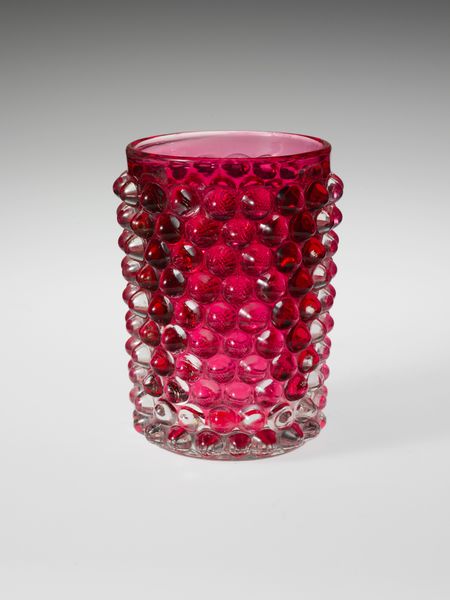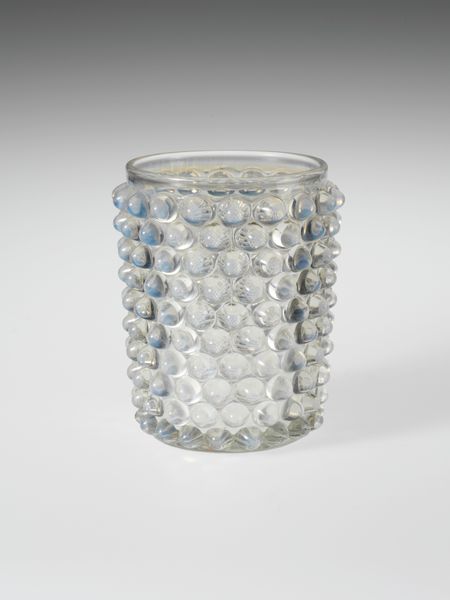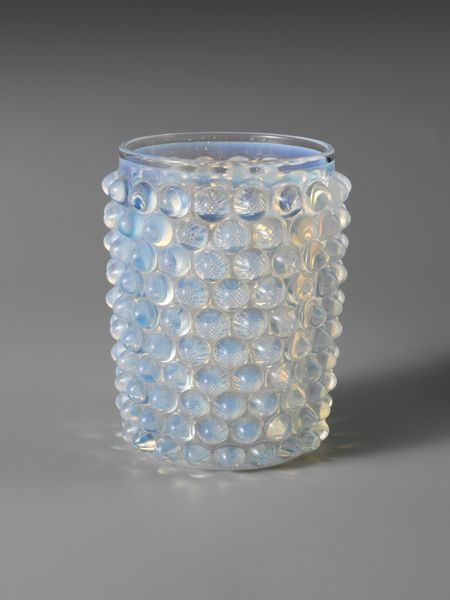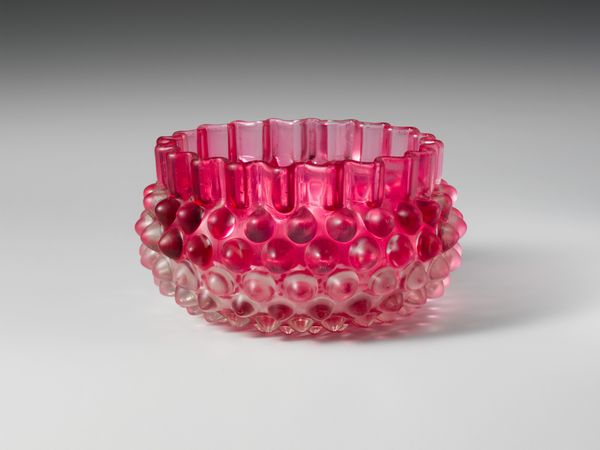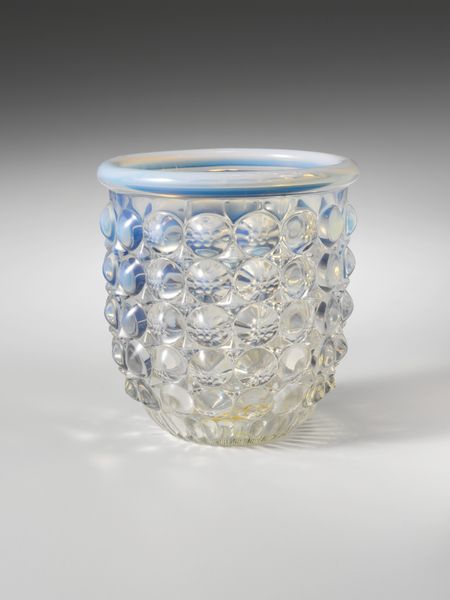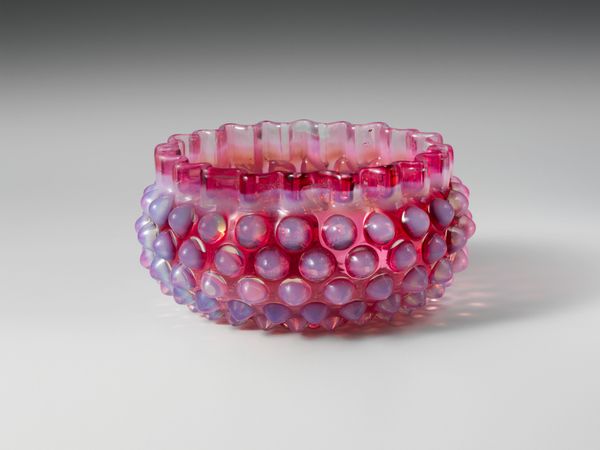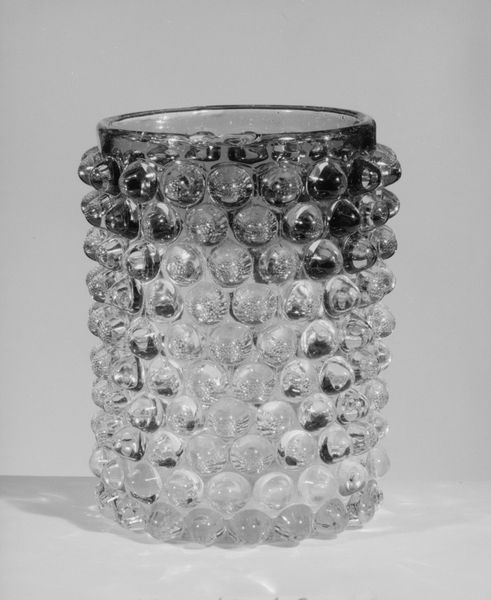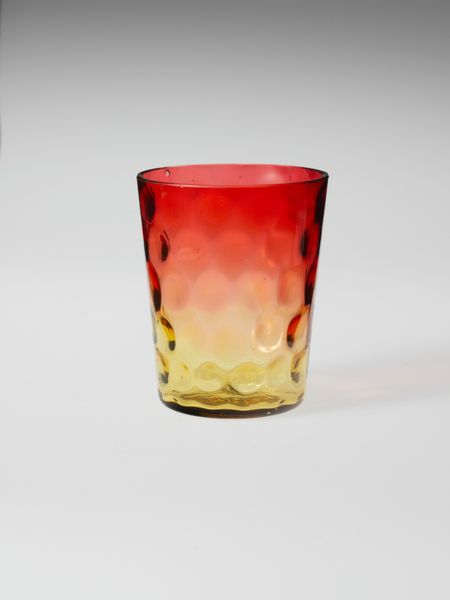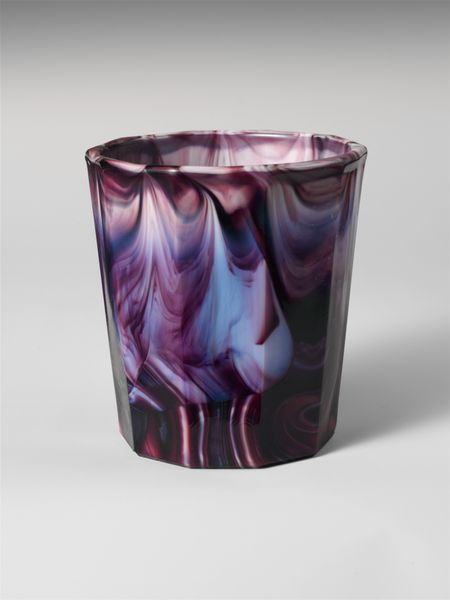
glass, sculpture
#
art-nouveau
#
glass
#
sculpture
#
decorative-art
Dimensions: H. 3 7/8 in. (9.8 cm)
Copyright: Public Domain
Editor: Here we have "Tumbler," made of glass between 1887 and 1896 by Hobbs, Brockunier and Company. I find the surface so striking; it almost looks like raspberries clustered together! What are your initial thoughts on this piece? Curator: Structurally, it presents a fascinating interplay of repetition and gradation. The modular units – those glass 'berries,' as you say – create a complex, textured surface. Notice how the chromatic scale shifts from a vibrant ruby at the upper register to nearly clear at the base. Editor: Yes, that gradient is very smooth. It gives a certain lightness to the object, even though it’s made of glass. Curator: Indeed. The absence of surface embellishment draws attention to the object’s pure form. One could argue the 'berries' disrupt the overall cylindrical shape, creating dynamism that complicates its functionality. Do you see a tension between its practical purpose and its artistic expression? Editor: I hadn't considered the disruption it causes; I was mostly focused on the aesthetics of the color and texture. I wonder, how does the regularity and modular design reflect philosophical concerns within the Art Nouveau movement? Curator: That's astute. Art Nouveau celebrated handcrafted work and found inspiration from nature. At first glance, we see a contrast here because these were mass-produced. Consider that it makes use of repeating modularity – perhaps suggesting a transition towards industrial replication of nature. The smooth, subtle gradation enhances that effect. Editor: It's interesting to think about how what looks natural to the eye is actually achieved through deliberate formal arrangements. Thank you for opening my eyes to that! Curator: My pleasure. It highlights the fact that the arrangement is no accident, the design a careful consideration of the period's aesthetic theories.
Comments
No comments
Be the first to comment and join the conversation on the ultimate creative platform.
